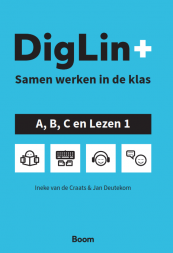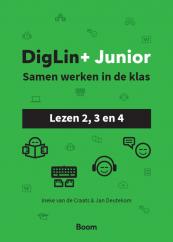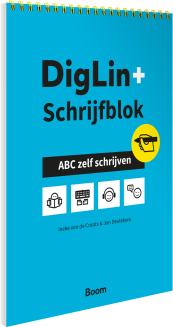Structure and didactics of DigLin+
Construction
DigLin+ is built up gradually: from sound to word, from word to sentence and from sentence to text, supported by images and sound. Through built-in patterns in the exercises, DigLin+ makes the student receptive to the regularity of language and writing without explicit instruction. There are a lot of different exercise formats, sorted by skill. This structure makes navigation between skills easy and clear.
I can get my students to work independently faster than before.
Didactics
DigLin+ tries to rely as much as possible on implicit and deductive learning by making the learner sensitive to patterns and structures. These are then woven into the language offerings, which are made permanently available to the learner whenever possible.
In addition to an approach to implicit and deductive learning, DigLin+ also uses inquiry-based learning to increase learner autonomy. Thanks to the clear structure and automatic feedback, students themselves discover how assignments work, what they have not yet mastered and where they can learn this. This way, the motivation of students is increased. Also, the exercises contain a certain game element, which motivates students to make and complete assignments well.
DigLin+ allows me to be more behind my students instead of in front of them.
Working digitally
Literacy is a difficult process for learners. Increasing both the quantity and quality of practice materials is therefore important. DigLin+ is a very simple and intuitive digital method with endless possibilities to practice independently. With the help of automatic feedback, students discover independently how assignments work and they gain insight into their own level and pace. The program gives the student the space to work independently. This contributes to the students' sense of autonomy.
The students were active, they even spontaneously started talking and correcting each other. I love the instant feedback and autonomy in DigLin+.
– teacher VSO



